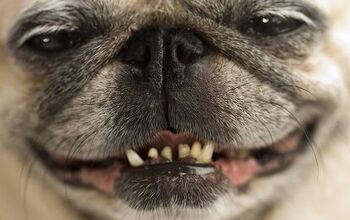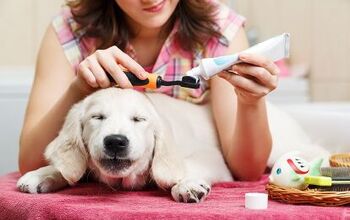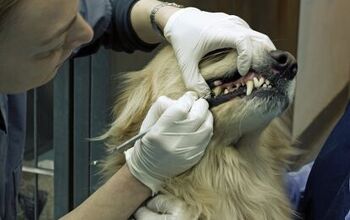Is Periodontal Disease in Dogs Reversible?

If you've ever gotten a whiff of your dog’s bad breath and thought, that can’t be normal, you're probably right. Bad breath isn’t just a quirky part of being a dog - it can be a sign of something more serious: periodontal disease.
This common condition affects most dogs by the time they’re three years old, and if left untreated, it can lead to pain, infection, and even tooth loss. But here’s the big question on most pet parents’ minds: is periodontal disease in dogs reversible?
The short answer? It depends on the stage.
The long answer? Let’s break it down.
What Is Periodontal Disease, Exactly?
Periodontal disease is a progressive condition that affects your dog’s gums, teeth, and the structures that support them. It usually starts with plaque - a sticky film of bacteria that builds up on the teeth after eating. If that plaque isn’t removed (through brushing or chewing), it hardens into tartar, and the real trouble begins.
As tartar builds up under the gumline, it causes inflammation, infection, and eventually damage to the bones and tissues that hold the teeth in place.
There are four stages of periodontal disease - and whether or not it can be reversed depends on which one your dog is in.
Stage 1: Gingivitis - The Reversible Stage
This is the only stage of periodontal disease that is truly reversible.
At this point, you might notice:
- Mild redness or swelling along the gumline
- Slightly bad breath
- A little plaque buildup
There’s no permanent damage yet - just inflammation. With a professional dental cleaning and a consistent home care routine (like brushing and dental chews), your dog’s mouth can go back to normal.
Stage 2–4: Periodontitis - Manageable, But Not Reversible
Once periodontal disease progresses beyond stage one, it’s no longer fully reversible — but it can be managed.
- Stage 2 involves early bone loss, and you might notice bad breath, gum recession, and mild discomfort.
- Stage 3 brings moderate to severe bone loss, loose teeth, and pain.
- Stage 4 is advanced — with major tissue loss, tooth damage, and even systemic effects like heart or kidney issues.
At these stages, your vet may recommend:
- Dental X-rays to assess bone loss
- Deep cleaning under anesthesia
- Tooth extractions (in more severe cases)
- Antibiotics for infections
While you can’t undo the damage, you can stop it from getting worse - and dramatically improve your dog’s comfort and quality of life.
How Can You Tell If Your Dog Has Periodontal Disease?
Dogs are experts at hiding pain, so it’s not always obvious when something’s wrong. Keep an eye out for signs like:
- Persistent bad breath
- Yellow or brown buildup on teeth
- Red, swollen, or bleeding gums
- Difficulty chewing or eating
- Pawing at the mouth
- Drooling more than usual
- Loose or missing teeth
If you notice any of these, it’s time to book a vet visit.
Preventing (or Slowing Down) Periodontal Disease
The best way to deal with periodontal disease? Prevent it - or catch it early.
Here’s how:
- Brush your dog’s teeth daily. It sounds like a lot, but even a few times a week can make a difference.
- Use vet-approved dental chews or water additives.
- Schedule regular professional cleanings — your vet will let you know how often your dog needs them.
- Stick to regular checkups, even if your dog seems fine.
A little effort now can save you (and your dog) from a lot of discomfort down the road.
Final Thoughts: Reversible? Sometimes. Manageable? Always.
So, is periodontal disease in dogs reversible? Yes - but only in its earliest stage.
After that, the focus shifts to managing the damage, relieving discomfort, and preventing it from progressing.
The good news? With good dental care - both at home and at the vet - you can help your dog live a happier, healthier life with a clean, pain-free mouth.
It’s never too late to start caring for your dog’s teeth. And trust us - your dog (and your nose) will thank you.

A proud mama to seven dogs and ten cats, Angela spends her days writing for her fellow pet parents and pampering her furballs, all of whom are rescues. When she's not gushing over her adorable cats or playing with her dogs, she can be found curled up with a good fantasy book.
More by Angela Vuckovic

























